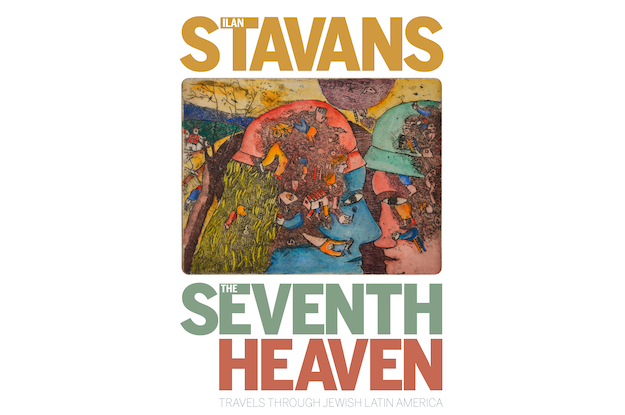This article is adapted from AQ’s latest issue on the politics of water in Latin America
Taken together, Latin America is home to the third largest Jewish diaspora group in the world, behind the United States and France. But as Mexican-born essayist and linguist Ilan Stavans notes in The Seventh Heaven: Travels Through Jewish Latin America, the story of Jews in the region can’t be told in one fell swoop. Every country has something different to say.
Stavans’ book is the result of five years of travel through Latin America’s diverse Jewish communities. Driven by the author’s desire to better understand his own Jewish upbringing (and influenced by an early 20th-century study of Eastern European communities by Shloyme Zanvi Rappoport) the text follows Stavans as he encounters neo-Nazi ideologies in Chile’s Patagonia, talks to Hassidic mystics in Argentina, and encounters “indigenous” Jews in New Mexico.
The book’s primary focus is migration and the shifting coordinates of home. Stavans, a somewhat sassy academic, is also the director of Restless Books, an editorial house in New York that publishes works on displacement. His own contribution to the subject provides an alternative history of the Americas, written through the lens of the Jewish experience, both positive and negative.
The Seventh Heaven presents that experience as bounded in many ways by Latin American Jews’ relationship to Spain. Columbus’ “discovery” of America coincided with the persecution of Spanish Jews and the eventual establishment, both in Spain and its colonies, of the Holy Inquisition. The 1492 expulsion remained a landmark event for Sephardic Jews, who although living in the Balkans and the ex-Ottoman Empire, considered Spain a sort of lost holy land.
Later persecuted during the regime of Francisco Franco, in recent years many Latin American Jews of Sephardic origin have taken advantage of opportunities to regain Spanish citizenship. A list of Sephardic last names published by the Spanish government is a testament to the profound influence of Jewish heritage both there and in Latin America. Stavans, though, is skeptical of the policy, viewing it not as the correction of a historical wrong, but as a failed attempt by the Spanish government to encourage investment.
Stavans considers how the 1492 expulsion shaped what was then New Spain as well. So-called crypto-Jews, those who kept practicing their traditions secretly, as well as converted Jews called nuevos cristianos, migrated to the New World in the early colonial period seeking their own pockets of freedom. Many eventually played an important role in the foundation of cities like Medellín and Monterrey.
Jewish flight has also taken place within Latin America itself: Many left-wing Argentine Jews fled to Mexico during the country’s dictatorship. More recently, Jews escaping economic collapse and rising anti-Semitic sentiment in Venezuela have left for Miami, Mexico City and Panama.
The Seventh Heaven explores how Jews have fared in their adopted homes. Stavans takes readers on a tour of the Argentine pampas, where, in the early 19th century, thousands of Eastern European Jews settled under the auspices of the German-Jewish philanthropist Baron Hirsch to work the land. There’s also the surprising story of Rafael Trujillo Molina, the racist dictator of the Dominican Republic, who opened the country’s doors to thousands of Jews in the farming region of Sosúa during World War II as a bid to “Europeanize” the land.
Throughout Stavans’ telling, a larger story of Latin America starts to emerge. It is one in which, far from bystanders, the region’s Jewish communities are both players and victims of global politics. Stavans cites the Hezbollah-backed attacks on the AMIA cultural center in Buenos Aires in 1994, shifting Cold War politics between Cuba and Israel, and the fact that the region’s largest Palestinian diaspora is in Chile, home as well to a sizable Jewish community.
Stavans seems to have written this book for U.S. readers, and many will be surprised by the size and influence of Jewish populations in the region. The question of whether there is such a thing as Latin American Jewry writ large would require a more careful study than what Stavans offers here. The Seventh Heaven is a travel book, and like other works of its kind—V.S. Naipul’s journeys through India, Ryszard Kapuscinski’s trips to Africa, or Paul Theroux’s train extravaganza— it is a negotiation between the environment it observes and the author’s own background. The book is not meant to be objective, all encompassing or, for that matter, politically correct. But it is enjoyable just the same.
The Seventh Heaven: Travels Through Jewish Latin America
By Ilan Stavans
University of Pittsburgh Press
Hardcover, 296 pages
—
Grabinsky is an independent journalist based in Mexico City








